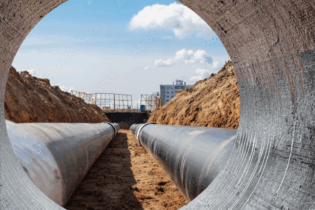Cape Town is two cities in one: one is an affluent global city; the other is a city of poverty, slums, shackdwellers and homeless people, with little to no municipal services.
By Jemima Spring (Mycelium Media Colab), Prof Lesley Green (Environmental Humanities South) Jacqueline van Meygaarden (Mycelium Media Colab)* While it boasts some of the most glamorous suburbs in the world, in 2022 there were approximately 497 established informal settlement areas in the metro with an additional 186 newly unlawfully occupied areas. The population of 4.5 million people has grown by a million in the last 10 years, and swells each year with thousands of visitors, especially in the dry summer months from November to April. Eating, drinking, producing, cleaning, living, working and playing here, Capetonians collectively use around 750 Mℓ of water daily, and generate a tidal wave of sewage and grey water filled with chemicals and other pollution, which needs to be treated and re-absorbed by the environment.Cape Town’s water and sanitation system includes 11 dams, 12 water treatment works, 500 pump stations, 130 reservoirs, 23 wastewater treatment facilities, 20 000 km of pipeline and 3 marine outfalls. Maintenance teams respond to over 400 pipe bursts, water leaks and sewer blockages on an average day. Not everyone has access to water and sanitation at home though. Between 2011 and 2016, access to piped water grew by just under 19%, but there is still a long way to go. Informal settlements are served by 10 000 communal taps and 50 000 toilets, which is vastly inadequate.
For that reason, water and sanitation struggles have characterised Cape Town in recent years — from the infamous toilets set up without any privacy in Khayelitsha, to prepaid water meters being forced on poor households, struggles over chemical toilets, the absence of sanitation, and ongoing battles over water pollution from inadequate wastewater treatment facilities that have not kept pace with Cape Town’s population increases. The city’s polluted water bodies and surrounding oceans are the symptoms of its painful past and inability of recent administrations to reimagine a city with collaborative water stewardship, service provision and housing developments that dissolve the barriers around which the city has been built. Patterns of settlement, inclusion and violent exclusion around the peninsula were shaped by access to water, prime land and other resources — from the arrival of European settlers in the 1600s to the establishment of apartheid in the 1900s — creating a blueprint for the inequality that persists today. Of all the many threads woven into the fabric of modern Cape Town, water is the most important. *More detail can be found on https://waterstories.co.za/a-tale-of-two-cities/






